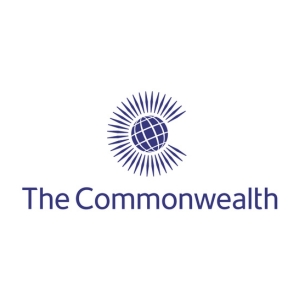Malikshaw Interim
More Than Recruitment: Strategic Partnership Latest

Since starting out 30+ years ago, I’ve come to see recruitment not just as a function, but as one of the most powerful levers for transformation. Time and again, I’ve witnessed how the right people, in the right roles, can shift an entire organisation’s trajectory. For me, it’s never been about filling vacancies. It’s about unlocking potential, building capability, and shaping leadership that drives lasting change.
I witnessed that at a very early stage of my career when resourcing teams to build the first digital mobile networks. We worked with a client who simply brought together the very best people they could from wherever they were in the world, into a country to make sure they got it right first time. If they didn’t, the penalties were painful, and we saw that plenty too, with other organisations who didn’t take quite the same approach to talent acquisition.
That belief has shaped a series of recent partnerships that reflect how recruitment is evolving and how it can deliver lasting, measurable value.
We have joined forces with a pioneering consultancy operating at the intersection of AI, blockchain and quantum computing. Together, we offer a full-spectrum transformation service, helping clients move beyond legacy systems and into future-ready environments. This goes well beyond executive search. We are co-delivering solutions that span strategic foresight, technical delivery and talent integration, bridging the gap between vision and implementation. Very few firms operate across this full lifecycle. We do. We think we need to.
In collaboration with a long-standing client preparing for a significant move into AI, we are challenging traditional hiring models. Conventional CVs and degrees are often poor predictors of success in this space. Our solution is a skills-first, aptitude-led model. By assessing for adaptability, potential and adjacent expertise, we are building teams that are not only AI-capable but future-resilient. For organisations aiming to stay ahead of rapid technological shifts, this mindset is essential.
An upcoming area of focus is helping clients tap into underutilised internal talent. In sectors undergoing major disruption, the aim will be to design retraining pathways in partnership with internal HR and L&D teams, mapping transferable skills and redeploying people into high-impact roles. This approach aims to do more than fill gaps. It will retain institutional knowledge, reduce recruitment costs and build a more agile, resilient workforce from within.
These collaborations signal a clear shift. Organisations are no longer just looking for recruitment support; they are looking for capability partners. Insight, strategy and adaptability are the new currency. At Malikshaw, we are leaning fully into this evolution. Whether you are building next-generation teams, navigating digital disruption or seeking a fresh external perspective, we are here to help you move from idea to impact.
If you are leading transformation and facing challenges around talent, capability or organisational agility, let’s talk. Here are four questions to consider:
Are legacy hiring models slowing down your transformation agenda?
Do you need to build capability in AI, blockchain or emerging tech?
Are you sitting on untapped talent that could be upskilled for the future?
Would your strategy benefit from a partner who sees recruitment through a transformation lens?
If the answer is yes to any of the above, we would love to hear from you.
Contact us at +44 (0) 870 042 1430
Explore more at https://www.malikshaw.com/
Change Champions: Leadership That Delivers.

Building a high-performing leadership team from scratch isn’t easy, but it’s absolutely worth the effort. Whether you’re starting from the ground up or thinking about developing talent from within, the journey takes careful planning, clear thinking and, above all, a people-first approach.
If you’restarting from scratch, putting together a strong leadership team usually takes anywhere from six months to a year. That includes finding the right people, getting them properly onboarded and giving them time to build trust, settle in and start delivering real results.
On the other hand, building a team from within can be a great option, especially if you already have some strong talent in place. Promoting from within often speeds things up, as those individuals already know the organisation and its culture. But it’s important to make sure they have the support, development and training they need to step confidently into leadership roles.
The right mix of skills is absolutely key. You want people who can think strategically, communicate clearly and understand the emotional side of leadership. Emotional intelligence might sound like a buzzword, but it makes a real difference, especially when leading through change. It helps create a team that can weather challenges, adapt and move the company forward together.
This is where working with a specialist recruitment partner can really make a difference. At Malikshaw Interim and Executive, we’re proud of our track record in finding and placing top-tier talent, including those hard-to-reach candidates who may not be actively looking but are the perfect fit. We know our industries inside out, and we’re deeply focused on finding individuals who not only tick all the boxes on paper but will genuinely fit and thrive in your culture. It’s not just about getting bums on seats,it’s about putting the right people in the right roles so your business can flourish.
The costs of getting it wrong can be huge. Poor leadership doesn’t just affect performance, it can hit morale, productivity and ultimately the bottom line. Sometimes, it takes a total refresh of the leadership team to get things back on track.
At the heart of all this is people. Change doesn’t happen in a vacuum. It’s people who drive transformation, people who inspire teams, and people who make the tough decisions. That’s why it’s so important to lead with empathy, create space for open communication and make sure your leaders are genuinely invested in the success of others. That’s how you create lasting impact.
When thinking about interims versus permanent staff, there’s no one-size-fits-all answer. Interims are fantastic when you need immediate impact or short-term expertise. They bring fresh perspectives and can hit the ground running. But permanent leaders give you long-term stability, cultural continuity and help shape the organisation’s future. In reality, a mix of both can be the best way forward, especially during periods of transformation.
A good example is a recent project we supported with a tech company going through a major digital transformation. They needed both permanent hires for long-term leadership and interims to bring in new thinking and specific expertise. By carefully selecting individuals who brought the right skills and shared the company’s values, we helped them build a team that drove real innovation and improved efficiency. It’s always rewarding to see that kind of impact.
Building a strong leadership team isn’t a one-off task. It’s an ongoing process that takes time, thought and care. It means getting to know your team, setting clear expectations, encouraging collaboration, investing in development and celebrating the wins along the way. When leaders lead by example and genuinely care about their people, that’s when the magic happens.
What’s worked for you in building your leadership team? Sometimes a fresh perspective or just someone to listen can make all the difference. We’d love to hear your thoughts.
Data Driven Decisions: People-Based Transformation

Data is playing a bigger role than ever in how organisations think about people. Hiring decisions, team structures, and workforce planning are increasingly being shaped by the insights we can draw from the information we already hold. Whether it’s measuring the impact of leadership styles, identifying gaps in capability, or improving retention, the shift towards data informed decision making is picking up pace. But for many organisations, the move from intuition to evidence isn’t always easy.
Take a hypothetical example from a mid-sized tech company based in Manchester. They had noticed rising staff turnover in one of their core teams and couldn’t work out why. By analysing data from performance reviews, engagement surveys, learning platforms and project outcomes, they began to spot a pattern. The teams that stayed together and delivered the most consistent results weren’t necessarily the most technically brilliant, but they did show greater diversity in backgrounds and collaboration styles. This prompted a rethink in their hiring strategy. Instead of focusing on a narrow set of academic or technical credentials, they started looking at candidates with broader skills and different perspectives. They also used internal data to spot early signs of disengagement, which helped them retain people who might otherwise have left quietly.
Now consider a government department in central London trying to apply similar thinking. The leadership is keen to make recruitment more strategic, especially with a push towards regional hubs. But the data they need is scattered across different systems. Some HR data is held in spreadsheets, some in ageing databases, and some hasn’t been kept up to date at all. Even when the information exists, there’s limited internal capacity to make sense of it. Middle managers are often left to interpret reports they’re not confident using, and senior leadership still relies heavily on instinct and past experience. The will to change is there, but the tools, skills and organisational support aren’t. Progress is slow, and any successes are hard to replicate.
These examples reflect the real-world challenges that come with trying to make data central to hiring and team building. For one thing, data is often siloed or difficult to access. Systems don’t always connect, and cleaning up legacy data can be a huge task. Even when good data is available, organisations may lack the skills to turn it into something useful. There’s also the issue of leadership focus. If data informed decisions aren’t championed at the top, they rarely gain traction further down. And perhaps the hardest part of all is shifting the culture. Moving from a process-driven, transactional model of HR to something more strategic takes time, and without a shared belief in the value of data, people quickly revert to old habits.
That said, the benefits are clear. When organisations invest in making data part of their people strategy, it becomes easier to make fair, consistent and forward-looking decisions. Hiring becomes more inclusive. Teams become more resilient. Talent development becomes less reactive. And managers feel more confident knowing they’re supported by real evidence, not just gut feel.
Does any of this resonate with your experience? Are you facing similar barriers around access, skills or culture when it comes to using data to shape your teams? At Malikshaw Interim and Executive, we’ve been helping organisations across the UK navigate these challenges and unlock the potential of data driven transformation. We support leaders and HR teams to build capability, align systems, and bring their people with them on the journey. If you’re looking for a partner to help you move forward, we’d be happy to start a conversation.
The True Cost of Doing Nothing: The Legacy System Risk

If you’re a transformation or project manager, chances are you’ve already come face to face with the joys of legacy systems. They lurk behind critical processes, often undocumented, poorly understood, and frustratingly resistant to change. And while the brief might be all about moving forward — cloud, digital, agility — you know you can’t do that properly without dealing with what’s already there.
Here’s the challenge though: legacy systems are rarely just a technical issue. They’re wrapped up in people, processes, politics, and sometimes a fair bit of fear. So if you’re building a team to lead meaningful transformation, you need more than just strong delivery skills. You need the right mix of experience, perspective, and courage to take on what many quietly avoid.
A good starting point is asking yourself: do I have people who truly understand how these systems operate, both technically and operationally? That knowledge is often buried deep in one or two long-standing employees or spread thin across legacy contracts. Without that insight, you’re flying blind. Could you bring in someone who’s done this before in another organisation — someone who knows how to ask the right questions and map out what’s really going on under the hood?
Then there's the future-focused side. Do you have enough digital expertise to challenge old assumptions and spot opportunities? Someone who’s not afraid to say, “Why are we still doing it like this?” Equally, who’s acting as the bridge between the two worlds — someone who can translate legacy into future state, and bring the business along for the ride?
One of the biggest risks in legacy-heavy environments is letting the tech define the strategy, rather than the other way round. As a transformation lead, you’re in a unique position to flip that dynamic. But only if your team has the confidence and credibility to influence across departments, challenge the status quo, and navigate the inevitable resistance.
Another thing worth considering: who’s got the emotional intelligence to handle the people side of change? Legacy systems aren’t just systems — they represent years of investment, career-defining projects, and in many cases, the comfort zone of senior stakeholders. You’ll need someone in your team who can build trust, understand the sensitivities, and still keep things moving.
It’s easy to assume legacy systems are just a constraint you have to work around. But the right team can actually turn them into a source of insight — a way to understand where the organisation’s been, and what needs to shift to get it where it wants to go.
So, if you’re shaping your transformation team right now, ask yourself: do you have the right mix of legacy know-how, digital vision, and leadership resilience? And if not, what would it take to get there?
At Malikshaw, we work with transformation leaders across industries who are building exactly these kinds of teams. If you’re facing this challenge and want to compare notes — or need someone who’s been through it before — we’d love to hear from you.
What have you found most difficult about managing legacy systems in transformation? Who made the difference on your team?
Malikshaw Appointed as Approved Supplier to the Commonwealth Secretariat
Malikshaw Interim and Executive is pleased to announce its appointment as an approved supplier to the Commonwealth Secretariat, further strengthening the company’s presence in the international public sector and development space.
This approval recognises Malikshaw’s proven track record in delivering high-calibre interim and executive talent across government and public sector organisations, both in the UK and globally. As a supplier, Malikshaw will support the Secretariat’s work in promoting democracy, development and cooperation across its 56 member states.
“Becoming an approved supplier to the Commonwealth Secretariat is a proud milestone for us,” said Rob Shaw, CEO of Malikshaw Interim and Executive. “We look forward to contributing to their vital mission by connecting them with the leadership and expertise needed to deliver real-world impact.”
Malikshaw Appointed as Approved Supplier to the National Audit Office
Malikshaw Interim and Executive is proud to announce its appointment as an approved supplier to the National Audit Office (NAO), the UK's independent public spending watchdog.
This appointment reflects Malikshaw's expertise in providing high-impact interim and executive professionals who support complex governance, audit, finance and public accountability objectives. As an approved supplier, Malikshaw will help the NAO continue its mission to improve public services and ensure value for money across government.
"We're delighted to be supporting the NAO as an approved supplier," said Rob Shaw, CEO of Malikshaw Interim and Executive. "This partnership recognises our shared commitment to excellence, integrity and the delivery of outcomes that matter."
Community News: Proudly Supporting National Careers Week
Our team members, Phoebe and Jack, had a fantastic time running a LinkedIn workshop for Year 12 students focusing on networking, job searching, and personal branding. It was inspiring to see the students so engaged, thinking ahead about their futures, and keen to learn how to present their skills and experiences effectively.
A big thank you to Hitchin Girls' School for hosting us, and to all the brilliant students who brought great questions, ideas, and enthusiasm to the session!
AI in Recruitment: Balancing Efficiency with the Human Touch

It’s impossible to ignore how quickly artificial intelligence has found its way into the world of recruitment. From CV screening tools to automated interview scheduling and even candidate matching algorithms, AI has certainly brought a wave of efficiency to the process. But while these tools can help speed things up and reduce admin, there’s a growing question we all need to ask: how do we keep the human element alive?
At Malikshaw, we work with clients across the public and private sectors, and we’ve seen the impact of AI-led tools first-hand. In some central government departments, for example, automation is already being used to sift thousands of applications for project and transformation roles—cutting weeks off the hiring timeline. That’s powerful. But we’ve also heard concerns: are we missing out on great candidates who don’t fit the algorithm? Is there room for nuance in a system that favours keywords over context?
The pressure to deliver quickly—especially on high-profile transformation programmes—makes AI appealing. Interim recruitment in particular can benefit from tools that flag candidates with niche skills or experience almost instantly. But at what point does it become too transactional?
Take the NHS, where some trusts have piloted AI tools to streamline hiring for administrative and operational support roles. In theory, it’s a game-changer. But in practice, there have been reports of candidates slipping through the net due to overly rigid screening criteria. It highlights the need for balance: technology should support human judgement, not replace it.
That’s why at Malikshaw, we see AI as a co-pilot, not a substitute. We still believe there’s no replacement for speaking to a candidate, understanding their motivations, and seeing how they might fit into a client’s culture—particularly in the public sector, where soft skills and adaptability often matter just as much as experience. Recruitment, especially at a senior interim level, is still a people business.
So, how do we get it right? How do we harness the speed and scalability of AI without losing the intuition and empathy that good recruitment depends on?
We’d love to hear your thoughts. Have you had a positive experience with AI-led hiring tools? Have you seen them go too far? And if you're leading a transformation programme, how much do you trust automation in finding the right people for the job?
Let’s keep the conversation going.
The Talent Equation

It's becoming increasingly clear that attracting and retaining the right talent in the public sector is no easy task. Speak to anyone involved in delivering large-scale transformation programmes—whether it's modernising digital services in central government, implementing major infrastructure upgrades, or reforming frontline services—and you'll hear the same thing: finding the people to lead and deliver change is harder than it's ever been.
Part of the challenge is that the workforce is shifting. Many long-serving public servants are nearing retirement, taking with them a huge amount of institutional knowledge. At the same time, the skills needed today—particularly in areas like digital transformation, data, procurement, and programme delivery—are evolving rapidly. The private sector often moves faster, pays more, and offers greater flexibility, and that's a tough act to follow.
This has real consequences. Transformation programmes stall because they can't find the right delivery leads or technical experts in time. Hiring cycles stretch into months. Teams are stretched thin, and momentum is lost. But while these challenges are well-known, they aren't insurmountable—and we're seeing organisations respond in smart, forward-thinking ways.
One of the most effective approaches has been embracing a more blended workforce model. Rather than seeing the use of contractors, interims, and temporary staff as a last resort, many public sector bodies are recognising the real value they bring—especially during periods of rapid change. The right interim specialist can hit the ground running, plug a critical skills gap, and bring fresh insight from other programmes across government and beyond. For many large-scale initiatives, this flexible expertise has become a cornerstone of delivery success.
At the same time, some organisations are investing in longer-term talent strategies. That means forming partnerships with universities, making better use of apprenticeships, and creating more flexible career paths that appeal to people at different life and career stages. It's about planning for future capability, not just reacting to current vacancies.
The truth is, we can't afford to stick with outdated recruitment models. If public sector organisations want to deliver real transformation, they need to think differently about how they find, attract, and keep the right people. At Malikshaw, we work side-by-side with public sector leaders to help shape and support that change—bringing in the interim expertise to keep programmes moving today, while helping to build the sustainable talent strategies that will power tomorrow.
Hiring on a Tight Budget: Cost-Savvy, Talent-Smart

It’s no secret that public sector organisations are feeling the squeeze. With tightening budgets and increased scrutiny over spending, leaders are under pressure to do more with less, especially when it comes to recruitment. But while finances may be limited, the expectations haven’t shifted. Services still need to be delivered, projects still need to be completed, and the people delivering them still need to be exceptional. So how do you maintain quality hiring when the purse strings are pulled tight?
It’s a familiar story for many: salary caps make it difficult to compete with the private sector, training budgets have been scaled back, and many teams are already stretched. This makes attracting the right people a real challenge. It’s not that the talent isn’t out there. It’s that the incentives to join, and stay, in public sector roles often pale in comparison to private sector opportunities. We’ve seen this play out across the country, from local councils to central government departments. Take the recent reports of social care vacancies in Birmingham, or the IT skill shortages within the NHS. Both show how difficult it can be to recruit when budget constraints limit what you can offer.
These pressures often lead to a heavier reliance on short-term contracts, consultancy support, or interim roles. While this can be a smart way to plug immediate gaps, it can also feel like a never-ending cycle. Organisations bring people in temporarily, only to lose them to higher-paying roles elsewhere once they’ve proven their worth.
So what can be done? Quite a lot, actually. One increasingly popular approach is to make strategic use of interim professionals. Not only can this be more cost-effective than long-term hires, but it also allows organisations to bring in highly specialised skills exactly when and where they’re needed. Interim specialists often hit the ground running, and with clear scopes of work, they can make a real impact without the long onboarding processes or permanent costs.
Beyond that, there’s the wider employment offer to think about. Many candidates, especially in today’s market, aren’t just chasing the highest salary. Flexibility, meaningful work, and a sense of purpose count for a lot. The public sector can often offer these in abundance. Whether it’s delivering on net-zero targets, improving transport infrastructure, or shaping digital services, the opportunity to make a tangible difference in people’s lives is a huge draw. It just needs to be communicated clearly and confidently.
Career development is another big lever. In a world where professional growth is often as important as the pay packet, showing people how they can learn, progress, and expand their skills within your organisation can be a major advantage. Structured development plans, mentoring, and cross-functional project work all add up to a more appealing proposition, even if the pay isn’t top of market.
The reality is that smart hiring doesn’t have to mean high-cost hiring. With a bit of creativity and a clear focus on what truly motivates professionals, it’s entirely possible to attract and retain the right people, even when budgets are tight. At Malikshaw, we work with public sector leaders every day to find those solutions, helping organisations build high-performing teams while keeping a close eye on cost.



















